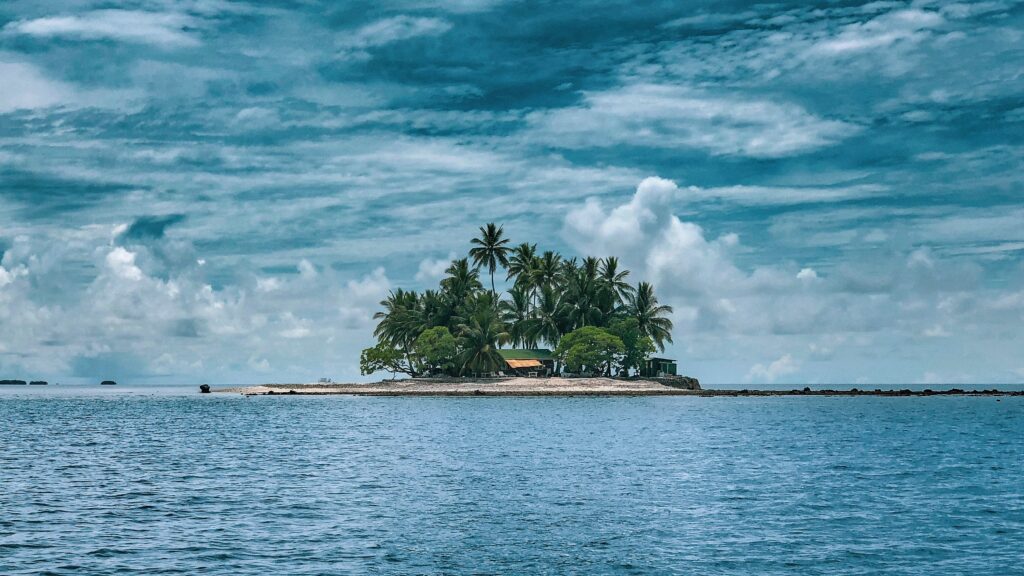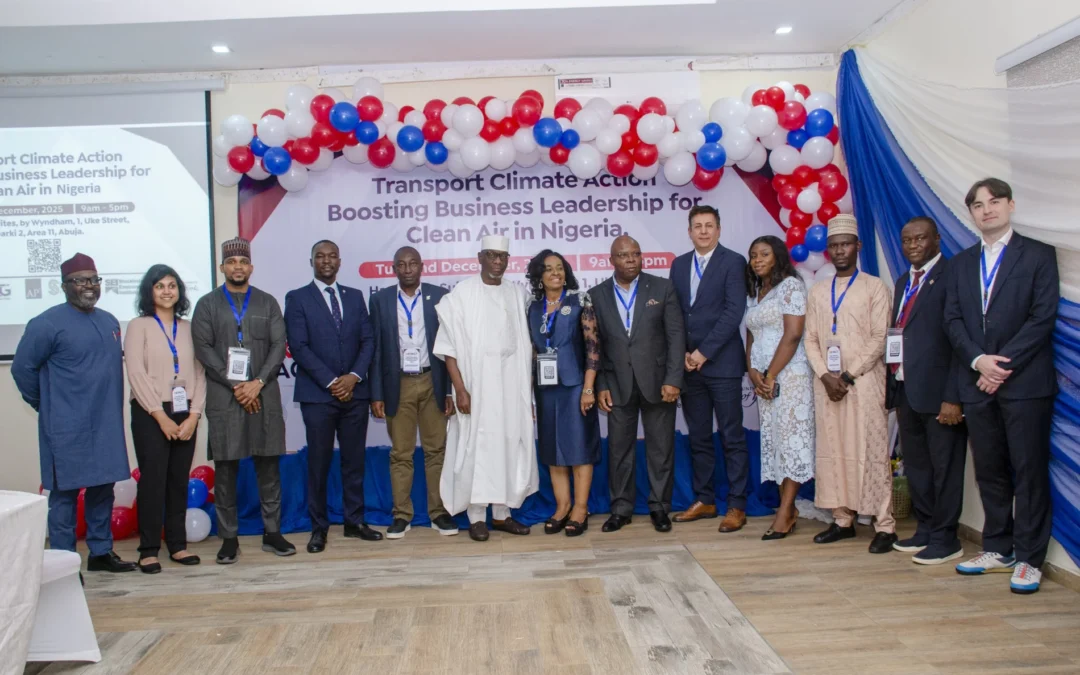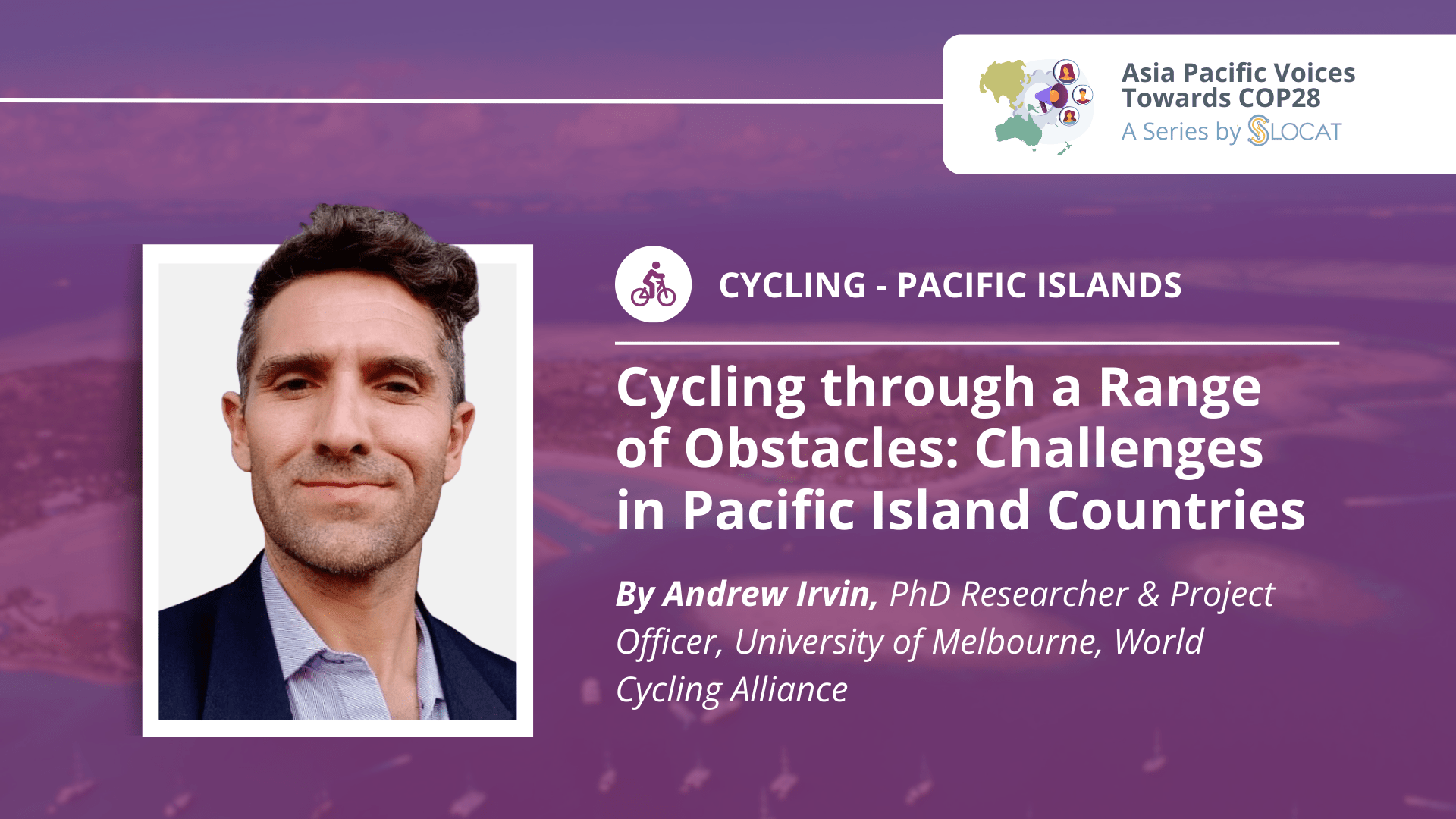By Andrew Irvin, PhD Researcher & Project Officer, University of Melbourne, World Cycling Alliance
Pacific Islands Countries (PICs) face many crises that demand urgent responses. PICs have some of the largest Exclusive Economic Zones and smallest land areas in the world, often leading to densely populated urban areas despite low total populations. Many PICs are struggling to achieve economies of scale under the current regulations across the global logistics and supply chain. They rely heavily on the shipping industry, which is one of the least regulated industries with poor standards for flags of convenience; volatile shipping costs; high import costs of vehicles and fossil fuels; and issues around the high seas jurisdiction. At the same time, the region has the highest rates of mortality from non-communicable diseases and premature loss of life with many suffering from obesity, diabetes and heart diseases. Among these challenges, private vehicles are imposing disproportionate negative socio-economic and environmental impacts to communities in PICs.
Oftentimes, the linkages between transport and health have not been adequately considered by government ministries, agencies, and authorities, development agencies, bilateral/multilateral financiers and official development assistance programmes. Transport policies in PICs would benefit immensely from the World Health Organization’s Health Economic Assessment Tool (HEAT) for Walking and Cycling, which assesses the massive potential savings and benefits in terms of emissions, finance and public health.
Unfortunately, many actors in the region lack the applied expertise and programmatic prioritisation to link health and fitness practices in the context of transport and mobility system planning. PICs entirely rely on foreign imports for fossil fuels and internal combustion vehicles (with nominally zero domestic production outside of PNG); both imports exacerbate national-level trade imbalances while creating sedentary lifestyles at the individual level. In 2019, 82% of the population in PICs is overweight or obese, and discussions around energy are too often focused on renewable technology (the supply side) and not focusing enough on reducing energy consumption (the demand side) through improved transport-health based planning.

In fact, PICs have just adopted the Port Vila Call for a Just Transition to a Fossil Fuel Free Pacific in August this year. However, much work is needed to realise such an ambitious vision. For example, although well identified as a problem and despite recent efforts in nations like Kiribati, there is no adequate disposal mechanism for vehicle waste across the region. What we need is to create transport and mobility systems that prioritise cycling, electric cargo bikes and other sustainable activity mobility options, which can also contribute to achieving high coverage of equitable infrastructure at lower costs.
→ According to the European Cyclists’ Federation, in 2021 on a per kilometer basis, infrastructure costs for the most inexpensively engineered cycleways were delivered at EUR 45.000 per kilometre (km) from 2015-2016 in Poland. Comparatively, in Kiribati from 2016-2018, inclusively designed road rehabilitation for South Tarawa cost US$75.1m for 36km of the nation’s main motorway, as well as 9.2km of feeder roads, inclusive of 57km of non-motorized pathways. This averages to roughly EUR 703.000 per km to complete the entire project. Why pay EUR 658.000 more per km in infrastructure costs that lock a jurisdiction into a transport mode that is import-dependent and ill-suited to local resource availability instead of scaling for sustainability?
More broadly regarding cost comparisons of cycling infrastructure and motorways, findings of multiple analyses show that the average operational and maintenance costs per km for bicycles is approximately 1/6 that of private vehicles. Gossling, et al (2019) found the “(r)esults suggest that each km driven by car incurs an external cost of €0.11, while cycling and walking represent benefits of €0.18 and €0.37 per km.” The ratio of public expenditure benefit-to-cost basis is in the range of 5:1 to 19:1, with some as high as 35.5:1. Given that this study mainly reflects the markets of the United Kingdom and European Union, it is likely that the ratio would be further maximised in the context of PIC economies.
The evidence is clear: maximising transport and mobility systems through cycling is simply a good socio-economic policy and a viable business case. Cycling measures have a multiplier effect to shift the demand for private vehicle trips to more sustainable mobility modes, thus contributing to reducing PICs’ fossil fuel dependency, lower import costs and yield many potential health benefits. It is one of the most cost-effective means to achieve national sustainable development objectives and it contributes to achieve a number of Sustainable Development Goals (SDGs) under the 2030 Agenda, such as SDG 3 (Good Health and Well-Being); SDG 7 (Affordable and Clean Energy), SDG 8 (Decent Work and Economic Growth), SDG 9 (Industry/ Innovation and Infrastructure), SDG 11 (Sustainable Cities and Communities) and SDG 13 (Climate Action). The paucity of data on cycling interventions in PICs also demonstrates the urgent need to promote cycling as a primary mode for individual mobility and light-duty cargo activities, with robust monitoring and evaluation efforts to quantify the cost savings.
Further readings and resources by the author:
→ Cost-benefit analysis exercises as part of UNFCCC NDC investment planning and project pipelines for Fiji, Kiribati and Palau.
→ Lifecycle Fiji Baseline Cycling Survey Analysis & Recommendations Report 2015
→ Irvin A 2019 Masters Thesis Land Transport Perceptions Procedure and Planning: A Fiji Urban Case Study

Andrew Irvin
Andrew has specialized in drawing linkages between private sector, civil society, and government bodies to prioritize conservation outcomes in economic development, living in Fiji since 2012, with over a decade of multi-sectoral experience working in SIDS. Working at the International Union for Conservation of Nature from 2014-2019, his climate change mitigation and risk reduction work included project management and policy development across the renewable energy, energy efficiency, sustainable transport, and waste management sectors. From 2019-2023, Andrew has worked with the Micronesian Center for Sustainable Transport, assisting RMI in refining its National Transport Decarbonisation Framework, and aiding Fiji, Kiribati, and Palau in developing national transport decarbonization NDC strategies. He is currently a PhD. Researcher at the University of Melbourne in the Faculty of Arts, working with the Climate Futures Initiative, and working in the Faculty of Architecture, Building, and Planning as a Project Officer in Urban Innovation.





















